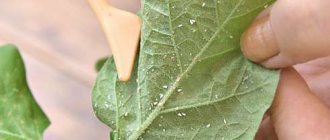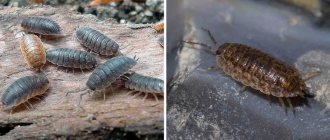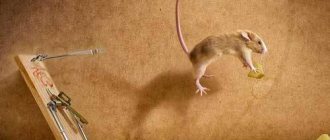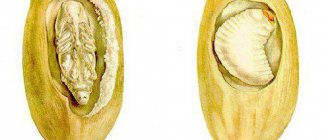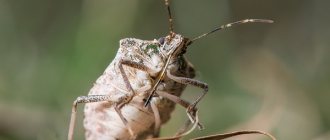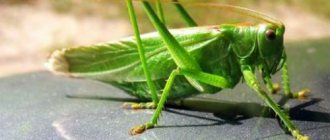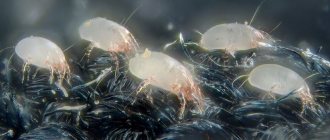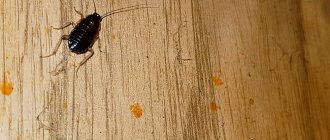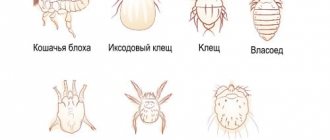Causes of ticks in the house
The main way to bring parasites into the house is through clothing. There are a lot of habitats for ticks: these can be seats in public transport, armchairs and chairs in public places, any soft, pile and textile surfaces with which a person comes into contact. A person brings them into the house on his clothes. The main time is spring and summer, when the air temperature rises to 18 degrees.
Pests can appear in places where dust accumulates and in hard-to-reach places.
Once inside a house, dust mites quickly begin to multiply in conditions favorable to them. They take root especially easily in beds and furniture upholstery, since the temperature and humidity in them are ideal for living, and dust and particles of human skin are an excellent source of food.
Blankets and pillows with long piles are also common sites for linen mites, as they are less likely to be washed.
What does a bug bite look like?
The digestive apparatus of these insects is designed in such a way that they are able to consume food only in a liquid state. Most species engage in peaceful consumption of plant juices. However, there are also more predatory representatives who trade in “vampirism”.
Their food is insect lymph, which can be called an analogue of human blood. To consume it, you only need a protein apparatus that can decompose already digested nutrients. After a long period of joint evolution, they learned to feed on the blood of animals, including human blood.
All representatives of the bedding family are obligate synanthropic parasites that exist thanks to people. The main habitat is the place where a person lives and stays - apartments, houses, crowded hotels. The most favorable conditions: a secluded dark corner, where, in addition, it is also warm. These can be any cracks in the walls, books, grooves in furniture, old electronics. To find their shelter, focus on those areas of the house that you look into least often. The fact that this place will be in close proximity to your bed will help make the search easier. The average lifespan of an individual is one year. The body length of this insect is from 3 millimeters when hungry and up to 8 millimeters when fed. In the absence of food, they cease to show signs of life, falling into suspended animation. Sleep will last until the first signs of food appearing.
This species is characterized by migratory behavior in unfavorable environments. This is a swarming insect, and if you find one representative, then most likely there will be its brothers nearby. They do not make nests, but gather together in a crowd in a fairly safe place. They can be detected by traces of feces, which are small dark spots. The color of the chitinous cover varies from yellow to dark shades of brown. The feeding cycle is five days, after which the hungry swarm will begin to look for food. In the absence of human blood, desperate individuals can turn to smaller animals, including chickens, geese, turkeys, pigs, dogs, cats and small rodents.
Figure 1. This is what bites look like on the human body
What do bedbug bites look like on the human body - small, densely located swellings with redness. They can be arranged in a row, which is determined by the mode of movement of the feeding parasite.
How many times can one bug bite? Depends on the species, but this is up to about five lesions from one individual. The parasite sucks from 1 to 7 milligrams of blood at a time. To find out what bedbug bites look like on the body, photos on the Internet will help you (Figure 1). Swollen red spots look extremely unpleasant. Most often, adult females bite in order to stock up on nutrients for laying eggs. The picture of what bedbug bites look like is not very pleasant in advanced cases. A hungry swarm attacks between one in the morning and eight in the morning, when everything is dark and you are still sleeping. After the “invasion” of these parasites, the skin can turn into one huge itchy and inflamed wound.
What do bedbug bites look like in children? Unfortunately, children's skin is more vulnerable to allergic reactions, and damage from this insect is no exception. The injured area contains a plaque of blood under the skin. The child will be quite restless at night, scratching constantly and possibly crying. Bedbug bites on humans, photos, symptoms, and methods of control vary depending on the type of insect. All representatives of a number of bedbugs secrete a pheromone with a characteristic aroma. You will immediately know what the smell is as soon as you hear it. For some, this light smell is comparable to almonds, while others compare it to cognac.
Bites and symptoms of bed mites
Unlike bed bugs, the appearance of mites may go unnoticed because there are no marks left on the body from their bites, but due to the reaction to their secretions, red spots may appear on the body. Bed tick bites on a person in the photo look frightening precisely because of the allergic reactions that appear; if there is no tendency to allergies, then they may not appear.
Linen mites can negatively affect a person’s well-being by disrupting sleep and well-being.
Signs of ticks in the house:
- runny nose without a cold;
- sneezing;
- rarely - fever without other symptoms;
- inflammation of the mucous membranes of the eyes and nose;
- rashes and redness on the skin that have clear boundaries and are firm to the touch.
Ticks bite humans very rarely; the greatest danger from such a parasite is the skin’s reaction to the creature itself and its feces.
Why are dust mites dangerous?
Since the skin is constantly renewed, a person gets rid of 1.5 grams of dead particles every day. They are consumed by ticks. During the digestion process, the resulting substances are converted into excrement containing glycogen. It is this that causes various allergic manifestations.
Enzymes (protein compounds) released in feces contribute to the destruction of epithelial and mucous cells, which then become a source of food for ticks. The general allergization of the body is also facilitated by crushed chitinous cover containing nitrogen-containing compounds.
A third of humanity suffers from dust allergies. But it cannot be a consequence of exposure to mineral microparticles and textile fibers. This reaction is a manifestation of increased sensitivity to products produced by microorganisms. Recognizing the manifestation of a tick allergy is not easy. Due to the similarity of the course of the disease, it is often defined as a common cold.
Doctors begin to carry out treatment, and in the meantime, the masked influence of mites becomes the cause of unwanted pathologies:
- atopic dermatitis;
- shortness of breath;
- allergic rhinitis;
- conjunctivitis (inflammation of the outer layer of the eye).
Children are the most sensitive to irritating substances. According to experts, 15-17% of them are susceptible to tick-borne sensitization.
Note! The appearance of symptoms in a newborn may be influenced by hereditary factors. If the mother has developed antibodies, the baby may also have them. When introduced into a house where there are ticks, the tick may develop an immune reaction.
How to get rid of bed mites
Despite the fact that ticks live in almost every home, they can and should be combated so that their number does not exceed the level that is safe for health. If you notice bed tick bites on yourself, as in the photo, or other symptoms, you need to determine how to get rid of them. Simply laying down clean linen or a blanket is not enough; more serious treatment is required. This can be done using special industrial preparations or folk remedies.
If signs of a laundry mite appear, one of the necessary ways to treat an allergic reaction is to completely eliminate the pest.
Drugs
- Allergof spray – fights not only mites, but also their secretions;
- Milbiol aerosol – suitable for treating mattresses, pillows and textiles;
- Easy Air – spray for complex effects, suitable for all surfaces;
- Dani Earth – suitable for textile products, effective against parasites in mattresses, sofa upholstery and pillows;
- Tsifox is an effective and potent drug, but requires special attention due to severe toxicity;
- All Rug – shampoo for wet cleaning.
How long does the parasite crawl on the body before it bites?
Depending on the location on the human body, from the moment of engagement to the bite, a tick can crawl from 40 minutes to several hours. First of all, the availability of clothing affects the speed. It takes the parasite considerable time to penetrate under it. Then, depending on the place of penetration, the tick will move to the optimal places for suction. Usually it takes the parasite several hours to do everything.
If you take a short walk through the forest in clothing covering bare areas of skin, you can detect the arachnid even before the bite, simply by examining the body and clothing. It is also worth remembering that a tick can pursue its victim for some time, so inspecting clothing upon arrival home is mandatory. He can sit with his clothes removed for up to 30 minutes, after which he begins to move around the apartment in search of a more vulnerable victim, for example, a pet or a child.
It should be remembered that in unfavorable conditions in a car or apartment, a tick can live for quite a long time: up to eight months. Since the conditions for the development of tick offspring are unsuitable, they will simply die. If there are cats and dogs in the house, then they usually become the next victims. Having attached itself to the pet’s body and having had enough of its fill, the tick can fall off when the animal is on a walk and return to its natural habitat.
Folk methods of struggle
Without resorting to serious chemicals, you can successfully control pests.
Unlike chemical exposure, traditional methods can eliminate laundry pests without harm to humans.
- A solution of table salt is an excellent remedy. To do this, you need to dilute 200 grams of ordinary salt in a liter of warm water and apply it to the surface using a spray bottle.
- Dilute 50 grams in a liter of warm water. finely grated laundry soap, add 100 ml of ammonia, treat surfaces and textiles with the solution.
- Tansy and wild rosemary are herbs that work well against ticks. You can place bags of dried plants under mattresses and pillows and upholstery, or you can treat them with a decoction.
- A steamer or steam generator will be a great help in fighting pests; parasites cannot withstand high temperatures and die.
Maintaining regular room hygiene will reduce the risk of parasites.
Effective methods for treating bites
The body of many people responds adequately to bed tick bites, and they heal on their own within a few days. There are people when they need to provide emergency assistance, since their body reacts very specifically. In cases where atypical reactions occur, it is necessary to:
- Thoroughly wash the bite areas with soap or soda solution, after which they are rinsed with clean running water. To prepare the solution, you need to take a glass of water and add to it a tablespoon of soda or liquid soap.
- Bite areas should be disinfected with any alcohol-containing product, such as vodka or moonshine, cologne or perfume.
- Severe itching indicates an allergic reaction. To reduce these symptoms, you can use both pharmaceutical and folk remedies.
Folk remedies
There are a number of effective and proven recipes. For example:
- Bite areas should be wiped with pure vinegar. There is no need to rinse off the product.
- You can apply a piece of ice or some product from the freezer to the bite site.
- If you apply a used bag of black or green tea to the site of the bite, this will relieve the victim of discomfort.
- Lotions are also made based on medicinal herbs. St. John's wort is considered the most effective remedy. To prepare the solution, you need to take a tablespoon of St. John's wort and pour a glass of boiling water. After the infusion has cooled, a cotton pad is soaked in the infusion and applied to the wound for half an hour. Herbs such as chamomile or calendula are suitable. The product is prepared in the same way as using St. John's wort.
- Treatment with a composition based on aloe and plantain. After mixing the ingredients, the wound is treated several times a day. The juices of these plants help reduce swelling of the bite site, reduce itching and have an antibacterial effect.
- Onion and garlic juice combined together act on the bite site in a similar way. The smell of onions and garlic, in addition to relieving discomfort, helps repel these bloodsuckers.
- You should drink at least 5 tablets of activated carbon to remove toxins from the body as quickly as possible.
As a rule, folk remedies help a person cope with negative consequences in the initial stages. If these remedies do not cope with the task, then you should use pharmaceutical remedies. Alternatively, you can use essential oils, which have the same effect as herbal infusions.
Recommended essential oils from plants such as:
- Lemon.
- Orange.
- Lavender.
- Geranium.
- Tea tree.
- Needles.
- Juniper.
- Cypress.
- Sagebrush.
- Mint.
Medications
There are both special remedies developed for the bites of various insects, and non-special ones, but which cope with this task. The thing is that each body reacts differently to bed tick bites.
As a rule, the following pharmaceutical products are used:
- Special ointments “Fenistil” and “Rescuer”. These remedies have a wide spectrum of action and help relieve the victim of negative consequences.
- Vietnamese star, which is characterized by the manifestation of an antibacterial effect.
- Afloderm helps to cope with severe itching.
- Propolis tincture is effective against any bites.
- Afloderm ointment is used with Tavegil, which helps relieve the symptoms of allergic reactions.
- The “Tsindol” talker will easily cope with the task.
- Akriderm perfectly relieves signs of inflammatory processes.
Prevention
To avoid turning your home into a habitat for a colony of parasites, you must adhere to a few simple rules:
- do not enter living quarters in street clothes and, especially, do not sit on the bed in them and, if possible, wash them immediately;
- do wet cleaning daily and regularly clean with a vacuum cleaner, not forgetting hard-to-reach places where dust accumulates;
- regularly clean curtains, bedspreads and carpets, and, if possible, abandon textile products or replace them with synthetic ones;
- regular treatment of floors and furniture surfaces with disinfectants;
- frequent steaming of bedspreads, upholstery, soft toys;
- regular washing and combing of pets, daily removal of hair from the floor and furniture;
- in winter, carpets, pillows and blankets can be taken out onto the balcony or outside.
Sub-zero temperatures are no less destructive for pests than heat.
The use of such simple methods can not only reduce the number of linen mites, but also prevent the formation of other harmful parasites.
Prevention and timely destruction of household pests is much more effective and simpler than treating the consequences of the appearance of parasites in the house, therefore it is recommended that regular sanitary treatment of rooms, timely dry cleaning of textile surfaces and treatment of bed mattresses and pillows will significantly reduce the threat of diseases that can be caused by insects.
It is necessary to be attentive to the regular change of bed linen, in which parasites most often appear.
Domestic mites (dust mites, also known as bed mites, furniture mites, linen mites, feather mites)
Knowledge about household ticks, what they look like and where they live in a private house or apartment will help you understand what to do with them. First of all, you will have to come to terms with the fact that it is impossible to kill all these uninvited guests, but it is quite possible to prevent the inhabitants of a living space in which bed mites have developed health problems caused by contact with these parasites.
Photo of the parasite under a microscope and its description
Dust mites, which are also called bed mites, furniture mites, mattress mites, linen mites, and feather mites, are so tiny in size that they can only be seen under a microscope. The size of its convex body rarely exceeds 0.5 mm. 4 pairs of legs equipped with suction cups are attached to the body. The outside of the bed mite is covered with a water-repellent layer. You can see what the parasite looks like in a photo taken in macro mode.
Today, science knows about more than 150 types of dust (bed) mites. The most dangerous for people are Dermatophagoides farinae (farina) and Dermatophagoides pteronyssinus (pteronyssinus).
Dust mite lifestyle
The linen mite starts in an apartment or private house, where it is warm and humid. According to various sources, the optimal temperature regime for the comfortable existence and reproduction of the parasite is 18–26°C. The ideal air humidity for a bed dweller is 55% or higher. These creatures have a relatively short lifespan of 65–80 days. During this period, the female manages to lay up to three hundred eggs.
If a hairy mite lives in flour, grain, plant and animal residues, then the dust mite starts:
- on bookshelves;
- in wardrobes;
- in bedding (pillows, blankets, blankets, bedspreads, mattresses);
- carpets made from materials of natural origin;
- in soft toys;
- on curtains and curtains;
- in magazines and books;
- in furniture upholstery;
- in deposits of old clothes;
- in places where dust accumulates (behind bookcases, wardrobes, furniture).
House ticks do not live alone, only in colonies. There can be up to tens of thousands of them in 1 g of dust. These mites are saprophytes, meaning they feed on dead organic matter. In Latin they are called "dermatophagoides". This means that they eat dead particles of human skin.
Details
How can a laundry mite settle in a house?
There are many options for this. The most common one is neighbors. If there are ticks in their apartment, then you will have them too, if only all the conditions are created for them. Pets can bring them back after a walk if their path, for example, took them past a dump of old furniture. These types of ticks do not bite animals; they only need people. You can bring such residents home in suitcases from travel, as well as with furniture or household appliances purchased from advertisements. Prolonged renovations in your apartment can also attract bedbugs, because there will be plenty of dust and humidity for their livelihoods.
Fighting bed mites
Everyone understands that they need to get rid of such cohabitants as soon as possible. In this case, you need to be patient and show maximum effort. The struggle process is long and consists of several stages.
Stage 1
The most effective way to get rid of bed mites is to use chemicals. They are presented in the form of solutions and sprays. Their composition is safe for people and animals, with no unpleasant or pungent odors. The direction of action and the period of maintaining the effect of treatment are different for each drug. You must read the instructions on how to work with powders and sprays and how to properly treat bed mites.
Attention! There should be no presence of humans or animals in the treated area during the day.
Returning home, to continue the fight against ticks, you must first ventilate the room well. Rinse the floor with water, bleach and salt dissolved in it.
Stage 2
After this, you need to get rid of chemical residues in the room, dust and possible humidity. Bedding must be washed at a sufficiently high temperature. Once a week you need to repeat this procedure. A prerequisite after washing is ironing.
Stage 3
Mattresses and pillows must be cleaned and thoroughly dried and ventilated. Carpets, soft toys, and upholstered furniture also need to be cleaned and dried. At this stage of the struggle, it is better to seek help from organizations that provide cleaning with special equipment.
Attention! Children often put soft toys in bed with them while they sleep. But ticks love to live in such toys. To prevent them from spreading out, you need to wash toys as often as bedding. And, if possible, remove them away from the child’s bed.
Stage 4
To continue the fight against bed mites, you need to wet clean the apartment every day, adding a few drops of any essential oil to the water. Use a vacuum cleaner to clean beds, furniture, toys, curtains, and carpets.
Attention! To prevent history from repeating itself with the appearance of bed mites, it is necessary to carry out a general cleaning of all utility rooms in the living space in order to get rid of trash, and along with it, accumulations of dust and dirt.
What chemicals help get rid of bed mites?
The product "Tsifoksom" copes with pests in 20 minutes. But women who are pregnant or breastfeeding should not use this drug. “Taran” guarantees the effect of its action for two months. "Allerqoff" will destroy ticks, regardless of their age development. Its actions apply only to the pest, so it does not affect people at all. Milbiol spray “works” on furniture and bedding.
Attention! If, for health reasons, it is not possible to independently treat the premises with chemicals, you should contact special services.
In addition, folk remedies can be used to combat bed mites.
Traditional methods of fighting bed mites
1. Prepare a solution from one liter of water, one hundred grams of ammonia and fifty grams of soap. Use this solution to treat all surfaces and places where ticks may live. Bedding is also washed in the same solution.
2. If linen mites are detected, you need to place bouquets of tansy, wild rosemary or wormwood in their expected habitats.
Cleanliness and order in living quarters, maintaining hygiene will not give bed mites a chance to settle. And, if you do happen to meet them, you should use the suggested tips.

